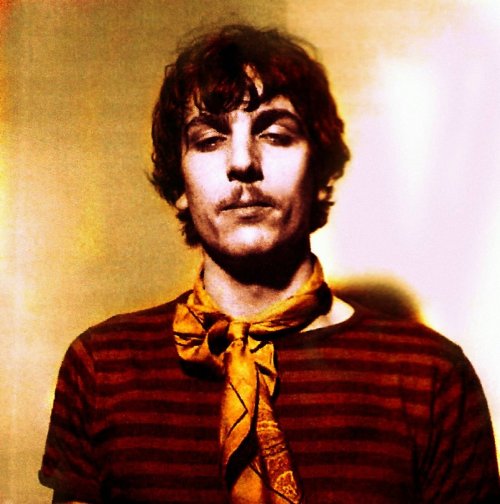When Pink Floyd started out in the mid-1960s they were a disco band. Or at least, they played at what passed for discos in London in 1966. The now infamous UFO Club became the scene for some of the most mind-expanding discos of the era, and the Floyd were almost the house band. The Floyd's version of Interstellar Overdrive was a guaranteed floor-filler, and unlike most of the usual dance hits of the day which usually comprised less than three minutes of hip-shaking, butt-wriggling, soft-shoe shuffling grooving, it went on and on until dancers were properly done in. Floyd's main man of the time, Syd Barrett, according to a fantastic recent book titled 'Barrett', had been grooving on old blues and R&B numbers for a while before forming the band in Cambridge.
Now, the idea of the Floyd as a disco band will doubtless annoy a lot of their more serious prog-infected fans, but given that the band had only two hit singles in their time worth mentioning, and both were disco-driven, should make even them stop and feel the groove. In 1977 a French music composer named Gabriel Yared was definitely feeling the Floyd disco groove when he arranged, co-produced and played on Discoballs, A Tribute to Pink Floyd, crediting it to the fictional 'band' Rosebud. The cinematic reference in the name reflects Yared's real passion, which is for movie soundtrack composing. He's better known as the composer of the soundtrack score for Betty Blue and The English Patient.
Discoballs starts at the beginning of the Floyd's career with contemporary disco reworkings of Interstellar Overdrive and 'Arnold Layne', before moving onto a great version of Money from 'Dark Side Of The Moon'. Improbable as it sounds, Rosebud's version was a club hit in the US and Europe, it having benefited from the previous success of their version of Have A Cigar which had been an an even bigger dance hit.
Doubtless impressed with Yared's work on their catalogue, the Floyd adapted a disco beat to the recording of the one truly international hit single that they enjoyed in their career: Released in late 1979/early 1980, Another Brick In The Wall Part 2, taken from The Wall became an unlikely hit, and was played in discos around the world. For any doubters out there, take a look at this perfect mash-up of Brick and the Bee Gees' Stayin' Alive. Can you see the joins?
Of course, by the end of the 1970s everyone was jumping on the disco revolving ball in search of a hit, and that included some unlikely prog-rock heroes. Jannick Top, the bass player on Discoballs had spent the previous ten years working with weirdo French space-prog act Magma, for instance. The Grateful Dead took to wah-wah and hi-hat on Shakedown Street in 1978. However, perhaps the most surprising disco convert was Keith Emerson, formerly keyboard player with The Nice and ELP. Emerson was arguably one of the prime movers in the development of prog rock — take a look at him here in 1968 with The Nice (Warning: it's only 5.44 min long, but feels like 15:44).
As one third of the ludicrously pompous, over-blown and self-indulgent ELP (find your own links, I'm not going to make anyone suffer Tarkus or Brain Salad Surgery), Emerson constructed faux symphonies on his over-heating Hammond organ, and live performances by ELP went on for so long that venue owners started charging them monthly rents. If asked to nominate any prog musician who would have been a fully signed-up member of the odious 'disco sucks' movement, I would have chosen Emerson. Which makes the discovery of this all the more surprising; It's Emerson's version of the great Chicago original, I'm A Man and was released as a single taken from his soundtrack to the Sly Stallone movie, Nighthawks.
Nighthawks, which was originally going to be French Connection Part III until Gene Hackman pulled out of the project, is a nice period piece (1981), as you can tell from Sly's facial hair. There's a couple of great scenes in discos, one of which features people dancing the the Rolling Stones' Brown Sugar. This clip uses the Emerson album track, 'Nighthawking' though. But it's Emerson's I'm A Man that's the stand-out track. Watching the Chicago Transit Authority (as they were still called) perform their song live in 1969, you can hear why Emerson considered it easy to adapt for a disco treatment. Watching the Floyd perform Money live in 1973, or hearing them play Have A Cigar in 1975 isn't exactly a disco experience, though. Which makes Yared's disco vision even more remarkable.
Since Rosebud's Discoballs cast a shimmering light on the disco potential of Floyd, there have been other producers and musicians to do likewise.On Floyd: A Chillout Experience Lazy put Money into a bossa nova beat, along with several other Floyd tracks. Of course, chillout was where the Floyd went to after Syd left, and it's no surprise that acts like The Orb took inspiration from them, or that Feeling Floyd came into being; here they are making out on the Floyd's tribute to Syd, Shine On You Crazy Diamond. Not that it's anywhere near disco. However, this very fine and anonymous mix of Money, which claims to feature the voice of Sharon Stone, uses Laurence Olivier and Bob Hoskyns from Paul Hardcastle's Just For Money (plus an odd photograph) to create an oddly danceable version with extra meaning.









No comments:
Post a Comment